The bus ride from Cahors brought us in the late afternoon to Albi, where we checked into our hotel and then went for a short orientation walk. It was here that Patrick first told us about the Cathars, who were a sect critical of the corruption in the Catholic Church. They were also called Albigensians since Albi was one of the four Cathar bishoprics created in 1165. In 1209 the Catholic Church initiated an inquisition, beginning with 10,000 crusaders who gathered in Lyon and marched south to the Languedoc area, aiming for communities around Albi and Carcassonne. Under Simon de Montfort, about 10,000 citizens of a nearby town, Beziers, were killed. Other targets were Carcassonne and Minerve, which we later visited.
Although the movement lasted until the 14th century, Albi was captured in 1215. The Cathédrale Sainte-Cécile was built from 1282-1480 and it was built in the form of a fortress to make a statement that the Catholic Church was again in charge.
Patrick stopped the group just around the corner from the cathedral for a short talk before he let us have this dramatic look at it. We were convinced that it looked like a fortress.
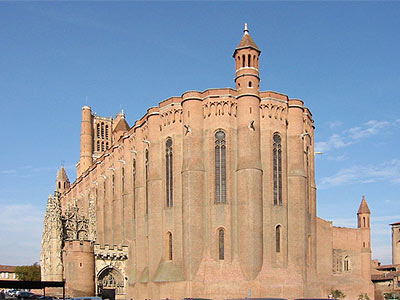
At the front of the church is a tower which is called the dungeon tower.

The portico for the entrance was added later.
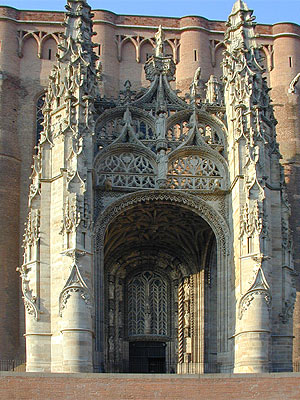
The frescos on the cathedral's arched ceiling form the largest work of Italian Renaissance painting to be found anywhere in France. The frescos are 98 meters long, or 107 yards, longer than our American football fields.

The front contains a large mural of the Last Judgement.
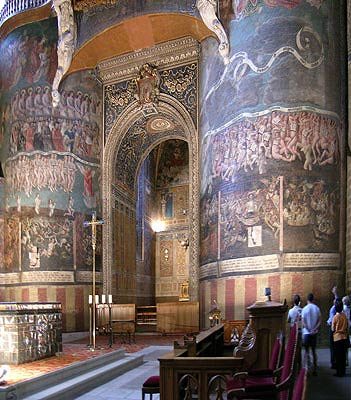
Patrick also took us on a tour of the choir, which in this church is in the rear.
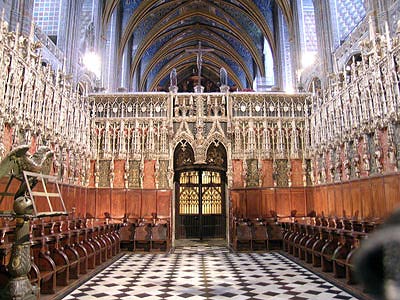
In the choir were many vestments on display.
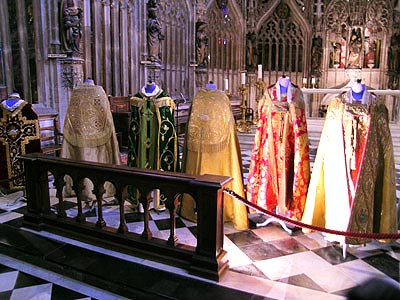
Patrick pointed out some of the statuary of the cathedral, considered to be the most important French sculptures of the Middle Ages. There is a good description of the statuary at this site.
After this introduction to the cathedral, Patrick took us to the Toulouse-Lautrec Museum, located next to the cathedral in the Palace de la Berbie (Archbishop’s Palace). This museum houses the world's largest collection of work by Toulouse-Lautrec, including paintings, drawings and cabaret posters created for the Moulin-Rouge.
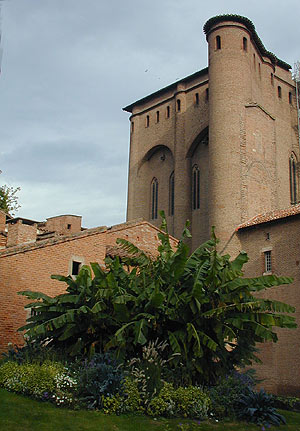
We were not allowed to take pictures inside the museum, so to see most of his paintings, drawings and posters, check this Webshots site.
The works of Henri Toulouse Lautrec range from an 1881 painting, "Cheval Blanc" to an 1895 poster, "La Revue Blanch."
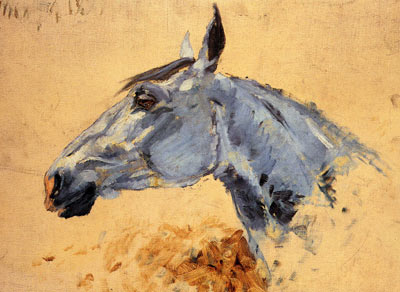
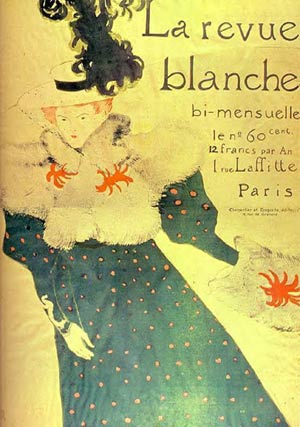
In the rear of this museum was a beautiful garden and a view of the river.
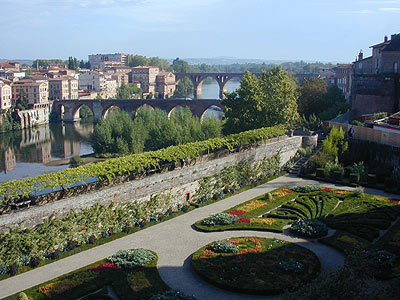
We could walk down into the garden.

The church could also be seen from across the river and it certainly would have been recognized as a fortress when it was built.
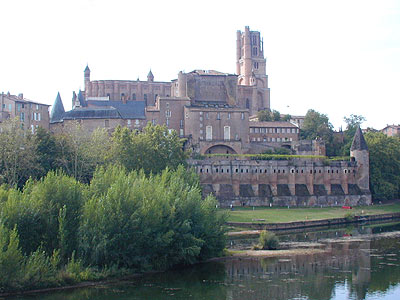
We were given free time in the city before meeting for a wedding aniversary celebration for Percy and Irene.
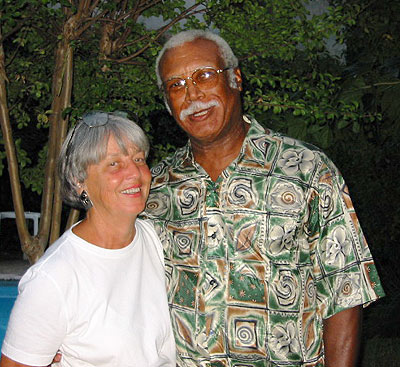
Many of us then had dinner at the St. James Pub. A popular menu item that evening was mussels and beer.
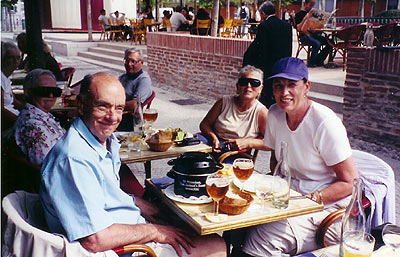

On y va to Caunes-Minervois.
